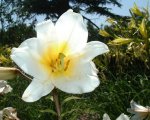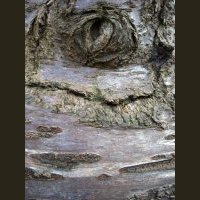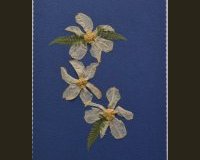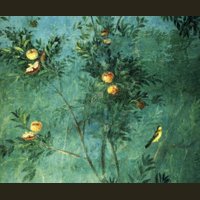accueil site > 45. Archives > Paysage et patrimoine > 01. Teaching materials > 03. Secondary school > Life in the Garden : how do plants populate their environment (1) (...)
-
45. Archives
-
Paysage et patrimoine
-
01. Fiches pédagogiques
Disciplines
-
01. Teaching materials
Disciplines
-
02. Jardin sans frontière : une école pour développer les compétences -clés en Europe
- 04. Partenaires
- 05. Rencontres transnationales
- 14. À l’école du jardin. Mobilités de formation dans les jardins d’Europe
- 15. À l’école européenne du jardin. Paroles de formateurs sur leurs formations "entre pairs"
- 16. A l’école auropéenne du jardin. Paroles d’apprenants sur leurs mobilités Erasmus+
- 19. Petit glossaire "européen" du jardin
- 20. Dissémination
- 21. Exploitation locale du projet
- 03. Un nouvel Erasmus+ : Le bleu européen comme étendard contre l’exclusion des adultes
-
09. Erasmus+ partenariato
-
Cammini del Blu in Europa
- 01. Incontri transnazionali
- 05. Progetti blu di partners
- 10. Percorsi europei del Blu
- 20. Storie blu
- 40. Disseminazione
- 43. Transcultural Carpet Blue
- 45. Missive blu
- 46. Glossario blu
- 47. Schede didattiche "Pedagogia del colore blu in Europa"
- 48. Illustrazioni delle schede didattiche : Mostra delle opere degli studenti
-
Giardino senza frontiere. Una scuola per lo slivuppo di competenze chiave in Europa
- 04. Partners
- 05. Riunioni transnazionali
- 14. Alla scuola del giardino. Mobilità di formazione nei giardini d’Europa
- 15. Alla scuola del Giardino. Parole di formatori sul loro addestramento "tra pari"
- 16. Alla scuola del giardino. Parole dei discenti sul loro Erasmus + Mobilità
- 19. Piccolo glossario europeo del giardino
-
Cammini del Blu in Europa
-
11. Erasmus+ Partnership
- 01. Transnational Meetings
- 05. Blue Projects of partners
- 07. European roads of the Blue
- 10. Blue stories
- 40. Dissemination
- 43. Transcultural Carpet Blue
- 45. Blue Missives
- 46. Blue Glossary
- 48. Roads of the blue : the file
- 50. Illustrations of the pedagogic file : exhibition of works of learners
-
51. Garden Without Borders : A School for Developing Key Competences in Europe
- 04. Partners
- 05. Transnational meetings
- 14. At Garden School. Training mobilities in the gardens of Europe
- 15. At Garden School. Words of trainers on their "peer-to-peer" training
- 16. At Garden School. Learners’ words about their mobility Erasmus +
- 19. Small European glossary of the garden
- 20. Dissemination
-
11. Partenariats Erasmus+
-
01. Les chemins du bleu en Europe
- 01. Rencontres transnationales
- 05. Projets bleus des partenaires
- 10. Routes du Bleu en Europe ...
- 20. Histoires Bleues
- 40. Dissémination
- 43. Transcultural Carpet Blue
- 45. Missives bleues
- 46. Glossaire bleu
- 47. Formation pédagogique : fiches pédagogiques et référentiel de compétences clés et transversales
- 50. Illustrations des fiches pédagogiques : exposition des travaux des apprenants
-
01. Les chemins du bleu en Europe
- 12. Pedagogic tools
- 17. Fiches pédagogiques
- 17. Schede Pedagogiche
-
01. Fiches pédagogiques
- 05. Livre d’or des formations
- 07. Livre d’or des formations Comenius - Grundtvig
- 10. National
- 20. International
-
Paysage et patrimoine
Life in the Garden : how do plants populate their environment (1) ? jeudi 8 mai 2008
 Life in the Garden : how do plants populate their environment (1) ?
Life in the Garden : how do plants populate their environment (1) ?
Flower Plant Breeding.
NOTIONNAL OBJECTIVES :
To know that flower plants populate their environment thanks to :
![]() the seed production stemming from the transformation of the ovules contained in the pistil
the seed production stemming from the transformation of the ovules contained in the pistil
![]() the scattering of fruits and seeds with the help of animals, wind or water
the scattering of fruits and seeds with the help of animals, wind or water
MATERIALS :
![]() flower plant inflorescences (flowers in buds, in full bloom, faded, with fruits…)
flower plant inflorescences (flowers in buds, in full bloom, faded, with fruits…)
![]() scalpel
scalpel
![]() colouring pencils
colouring pencils
![]() pots filled with compost or vermiculite, wheat or soya seeds
pots filled with compost or vermiculite, wheat or soya seeds
PROCEDURES :
Use the following worksheet :
1. Dissecting the flower
“The flower is made up by
![]() protective green sepals,
protective green sepals,
![]() petals,
petals,
![]() stamens containing pollen seeds
stamens containing pollen seeds
![]() pistil containing ovules.
pistil containing ovules.
Read the text, identify the different floral sections of the flower proposed as sample.
Remove
![]() 1. the sepals,
1. the sepals,
![]() 2. the petals,
2. the petals,
![]() 3. the stamens so as to free the pistil.
3. the stamens so as to free the pistil.
With a scalpel, cut the pistil in length and observe the ovules.
Caption the lily photo above with the underlined words of the text.
2. The transformation stages of the flower into fruit
Find these stages back by creating a flower plant herbarium (cf. track Life in the Garden : how to create a herbarium). Make the following captions match with the different sections of the flower plant : flowers in bud, young fruits, faded flowers, mature flowers freeing seeds.
3. The seed evolution
Grow wheat, bean or soya seeds in a solid environment. After two days, what do you notice ?
Make a transversal cut of the sprouted seeds. Make a drawing observation captioned with the following words : reserve tissue, young germ, seed husk.
ASSESSMENT :
Explain the transformation of the flower into a fruit by completing the text below with the words “seeds, pollen, fruits, wind, animals, pistil :
“For a flower to transform into a fruit, the … freed by the … must be carried (by the … or the …) to the …. The pistil grows and transforms into … containing the ….
Jean-Michel Josse professeur de Sciences de la Vie et de la Terre, Lycée Français Charlemagne de Pointe Noire, Congo Brazzaville


















 Version imprimable
Version imprimable